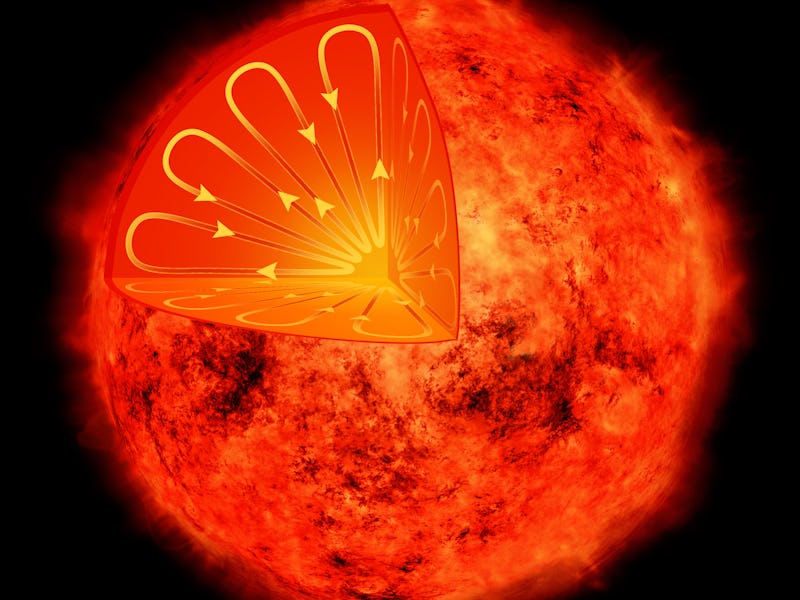The discovery of a potentially habitable, Earth-sized planet orbiting the nearest star to us was an incredible find. And it turns out the star, Proxima Centauri, may actually be more like the sun than we previously imagined — further bolstering hopes that the exoplanet itself, Proxima b, may resemble Earth and prove to be a fertile ground for life to evolve or for humans to colonize.
Proxima Centauri, 4.24 light-years away, is a red dwarf star. That means it’s dimmer and smaller than our sun (only one-tenth the mass, and one-thousandth as bright). This means for a planet to reside in the star’s goldilocks zone (where liquid surface water can exist), it needs to orbit it relatively close. This also puts it in a position where it might be badly inundated by solar flares that are powerful enough to strip Proxima b of its atmosphere and render it, infant, uninhabitable.
Proxima Centauri
But new research led by the astronomers at the Harvard-Smithsonian Center for Astrophysics (CfA) and published in the Monthly Notices of the Royal Astronomical Society demonstrates there’s at least one trait Proxima Centauri shares with our own sun — it has a starspots, and undergoes a regular activity cycle where they activate and dissipate.
The sun’s spot activity works on an 11-year cycle. Dark blotches will appear on the surface when the temperature decreases a bit. Magnetic fields operate in such a way as to sometimes reduce the flow of ionized gas (plasma) towards these regions, which allows the spots to form. At the maximum of the cycle, there might be as many as 100 sunspots covering less than one percent of the sun’s surface.
On Proxima Centauri, the researchers found a similar cycle working on a seven-year course. However, because the red dwarf is so much smaller than our own yellow sun, as much as 20 percent of the surface could be spotted up.
“If intelligent aliens were living on Proxima b, they would have a very dramatic view, lead author Brad Wargelin of the CfA said in a news release.
It’s an unexpected find that underscores how much more there is to learn about stellar magnetic fields. It’s unclear to what extent the starspot cycles on Proxima Centauri would affect habitability on Proxima b. A regular starspot cycle might suggest a bigger stability for the star, but it does not scrub away the theory that stellar flares might be bombarding Proxima b and turning it into a sterile landscape. Further research — and most importantly, direct observations — will be required before we really know what’s going on in our nearest interstellar neighborhood.
